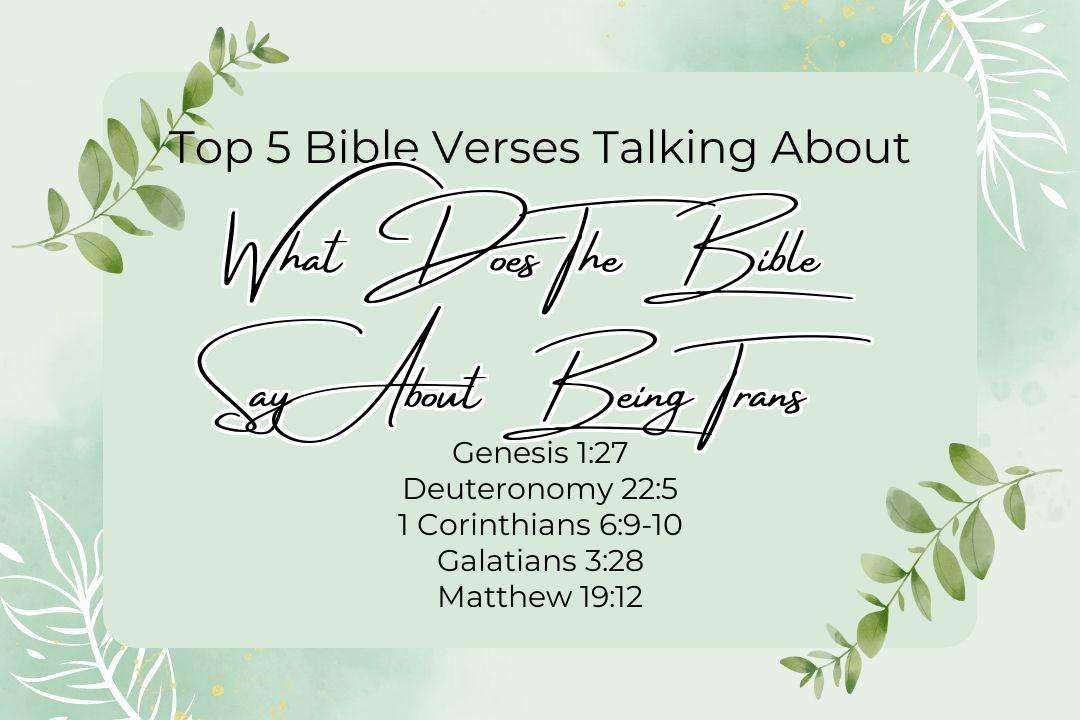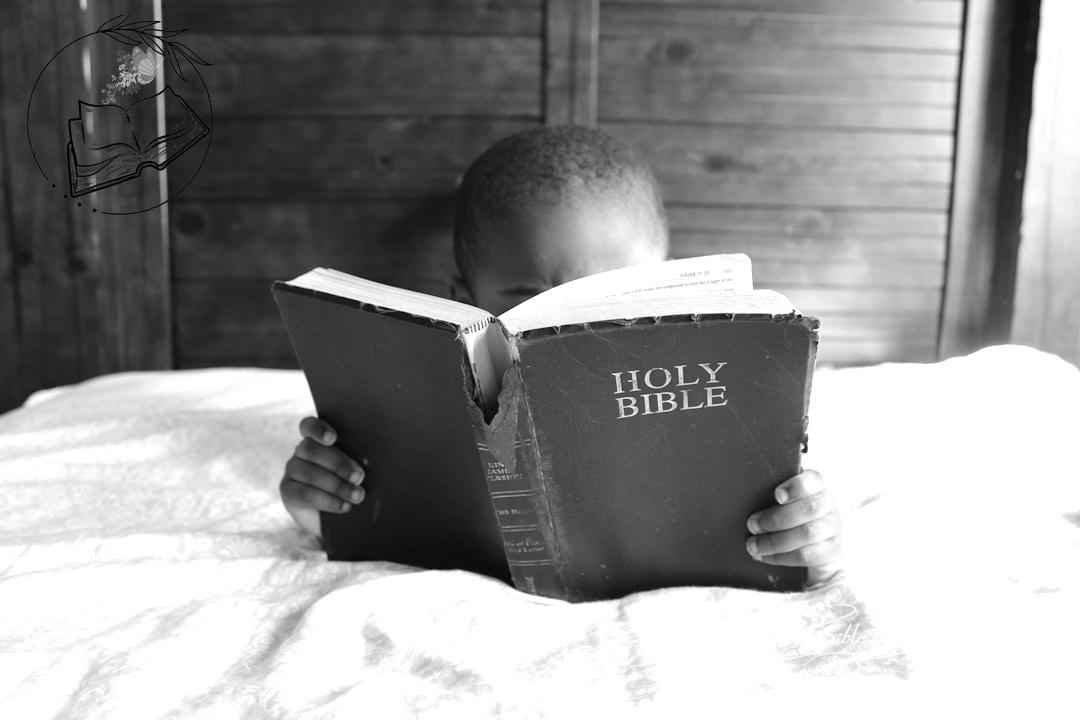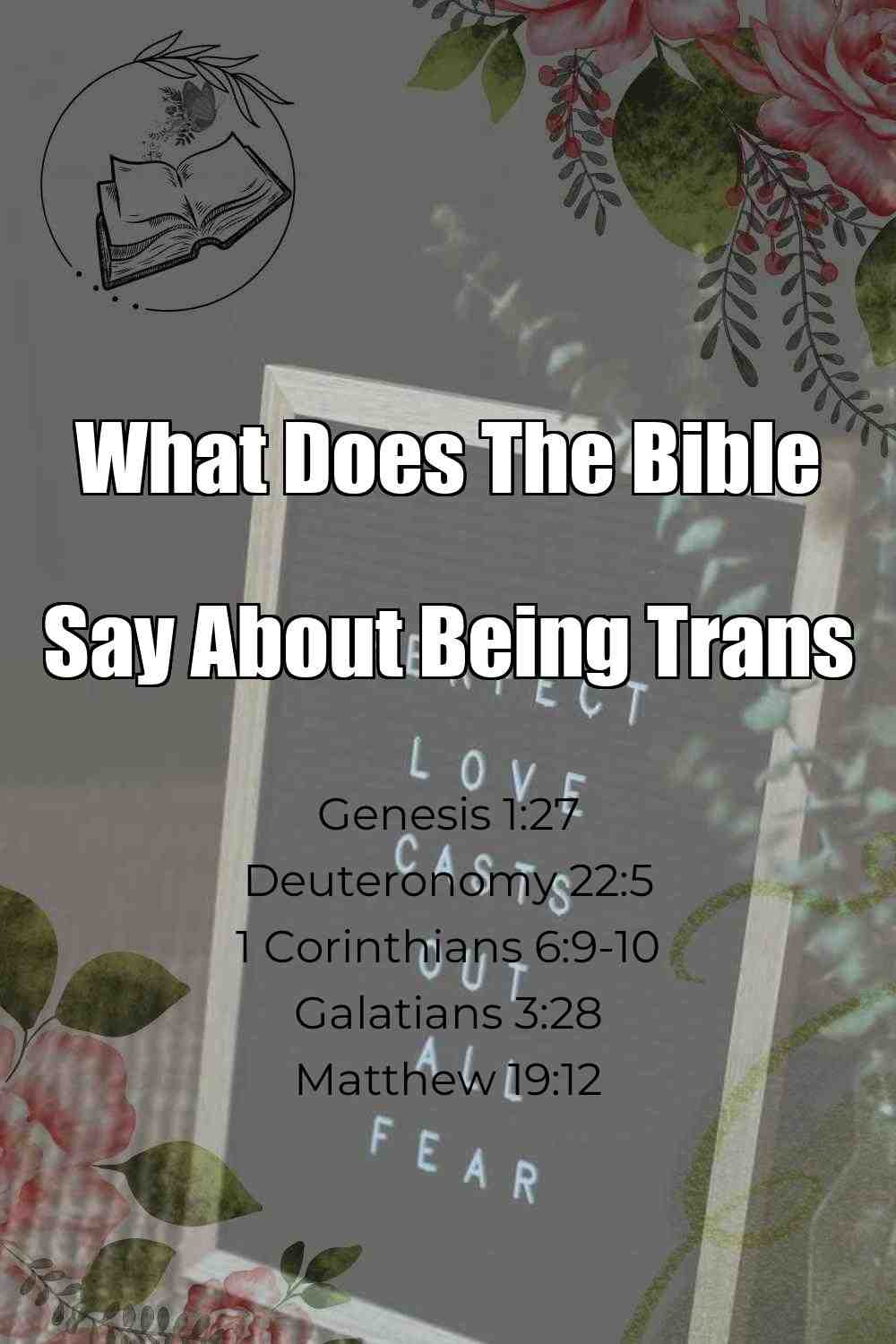Honestly, have you ever stopped to think about where the Bible stands on being trans?
I was raised Christian, and to me, loving everyone – no exceptions – is key, but then there’s the whole thing about following the scripture…
Navigating the whole trans debate with empathy, without totally disregarding the Bible, is what I’m here for.
I’ve always wondered, how do we stay true to ourselves and to the teachings, yet not hurt anyone’s feelings in the process?
Top 5 Bible Verses About What Does The Bible Say About Being Trans
I stumbled upon these scriptures that, honestly, kinda hit the nail on the head. Here’s a few verses that got me thinking – and might just do the same for you. They kinda jump right into the thick of it, shedding light on all the things I was wondering. Makes the conversation way more real, you feel? They offer some much-needed background info, helping me grasp the bigger picture.

Picture by BibleBreathe.com about What Does The Bible Say About Being Trans
My Journey to Understand the Biblical Context
I’m a Christian, and people often ask me, “What’s the Bible’s take on being trans?” Honestly, it’s a tough topic to wrap my head around, but I’m trying to approach it with love and empathy.
Creating Human Identity and the Bible’s teachings
I keep going back to what the Bible says:
“So God created man in his own image, in the image of God created he him; male and female created he them.” (Genesis 1:27, KJV).
It’s like – we’re all created in God’s image, right? Our identity is rooted in Him. But then… what does that mean for people who identify as trans?
Sex, Gender, and the Bible’s Perspective
From what I gather, the Bible kinda uses sex and gender interchangeably. But nowadays, we think of sex as biological differences, and gender as more about social norms. I don’t see the Bible explicitly talking about gender identity, but there’s this emphasis on living true to yourself, authentically.
Like, the apostle Paul says,
“For we are his workmanship, created in Christ Jesus unto good works, which God hath before ordained that we should walk in them.” (Ephesians 2:10, KJV).
This verse just keeps echoing in my mind – live the life that’s authentic, you know, the one God made you for.
Unpackaging the Bible’s Cultural and Historical Context
When I read the Bible, I gotta remember it’s coming from a totally different time and culture. Ancient social norms were pretty different from ours, and their understanding of human identity was, too. For example, men and women had super defined roles in ancient Israel.
Thing is, as Christians, we’re supposed to be living in the now, taking biblical principles and applying them to our world. That theologian Karl Barth said something like, “The Bible’s not just abstract truths; it’s living truths we can only grasp in the context of our present.”
So yeah… when it comes to being trans, let’s dive in with compassion and open hearts, living out our faith as best we can.
Trying to Understand the Bible’s Take on Trans Issues
Taking a Deeper Look at This Whole Male and Female Thing
I’m sitting here thinking about what the Bible says about being trans, and that one verse in Genesis keeps popping up in my head.
The Bible says,
“So God created man in his own image, in the image of God created he him; male and female created he them.” (Genesis 1:27, KJV).
It seems to me like this verse is trying to tell us something – we’re all created in God’s image, and that’s pretty cool, I guess. As for the whole male and female thing, it’s kinda presented like, hey, that’s just what humans are. But, it’s not really clear cut, I don’t think. I mean, does it really mean that’s the only way to be?
Checking Out That Cross-Dressing Rule
There’s this other verse that gets thrown around a lot when we talk about trans stuff: Deuteronomy 22:5.
The Bible says,
“The woman shall not wear that which pertaineth unto a man, neither shall a man put on a woman’s garment: for all that do so are abomination unto the Lord thy God.” (Deuteronomy 22:5, KJV).
Okay, so at first glance, it’s all like “no cross-dressing”, right? But, you gotta think about when this was written and who it was for. It’s more like, back then, they needed some clear lines between men’s and women’s jobs in society. It’s not really talking about gender identity, or at least that’s my two cents.
Figuring Out That Whole ‘Men Who Have Sex with Men’ Thing
Then there’s 1 Corinthians 6:9-10, and man, this one’s gotten people worked up for ages.
The Bible says,
“Know ye not that the unrighteous shall not inherit the kingdom of God? Be not deceived: neither fornicators, nor idolaters, nor adulterers, nor effeminate, nor abusers of themselves with mankind, Nor thieves, nor covetous, nor drunkards, nor revilers, nor extortioners, shall inherit the kingdom of God.” (1 Corinthians 6:9-10, KJV).
There’s this one word, ‘arsenokoitai’, and people still argue about what it means. Some folks think it’s all about same-sex relationships, while others say it’s more about people taking advantage of each other.
Finding a Way to Equality in Christ
All these verses, though – it’s like we’re trying to untangle a huge mess of ideas. But there is a bottom line to all this Bible business: love and acceptance.
The Bible says,
“There is neither Jew nor Greek, there is neither bond nor free, there is neither male nor female: for ye are all one in Christ Jesus.” (Galatians 3:28, KJV).
In Christ, I guess all our differences kinda fade away. I mean, including this whole gender identity business. That’s the thing to hold onto when we’re trying to figure all this out and love each other along the way.
Different Christian Perspectives on Trans Issues

Photo modified by BibleBreathe.com. Original photo by Samantha Sophia on Unsplash
The Conversation Starts with Love, For Me
I’m sitting here trying to put my thoughts into words about this super sensitive topic and Martin Luther King Jr.’s words keep echoing in my head,
“Darkness cannot drive out darkness; only light can do that. Hate cannot drive out hate; only love can do that.”
Thing is, when it comes to what the Bible says about being trans, we gotta acknowledge there’s a whole bunch of different perspectives within the Christian community – it’s pretty complex, if you ask me.
Conservative Perspectives: It’s About Biological Sex, They Say
I’ve met some conservative Christians who are all about the importance of biological sex, and they often point to biblical passages like Genesis 1:27,
“So God created man in his own image, in the image of God created he him; male and female created he them.” (Genesis 1:27, KJV).
Their argument’s that these passages make it clear there’s a distinction between male and female, and that we should identify with our biological sex – that’s their take, anyway.
Liberal Perspectives: More About Love, Less About Rules
On the flip side, there are some liberal Christians I’ve met who are all about love, acceptance, and self-identification – it’s a whole different vibe, you know? They bring up passages like Galatians 3:28,
“There is neither Jew nor Greek, there is neither bond nor free, there is neither male nor female: for ye are all one in Christ Jesus.” (Galatians 3:28, KJV).
They’re all about how these passages show we’re all equal and valued in God’s eyes, no matter what our gender identity is – it’s a pretty beautiful message, if you ask me.
Perspectives are all Over the Map
As I try to navigate this conversation, I’m reminded there’s no one simple answer – it’s way more complicated than that. Different Christian denominations have different views on trans issues, and even within those denominations, there’s a whole range of perspectives.
Take The Episcopal Church, for example – they’ve come out and publicly affirmed the dignity and worth of trans individuals, which is pretty cool. But then there are some Evangelical denominations that’ve taken a more conservative stance.
At the end of the day, as Christians, we’re called to love our neighbors as ourselves (Mark 12:31). For me, that means approaching this conversation with empathy, compassion, and an open heart – that’s the only way we’ll ever really understand each other.
The Bible and This Whole Gender Thing
My Take on Eunuchs in the Bible
I’ve been thinking a lot about what the Bible says on the whole gender identity thing – I mean, I’m no expert, but it’s on my mind. That one conversation between Jesus and his disciples keeps popping up in my head, you know?
Anyway, Jesus had this to say in Matthew 19:12:
“For there are some eunuchs, which were so born from their mother’s womb: and there are some eunuchs, which were made eunuchs of men: and there be eunuchs, which have made themselves eunuchs for the kingdom of heaven’s sake. He that is able to receive it, let him receive it” (Matthew 19:12, KJV).
To me, Jesus seems to be talking about three different types of eunuchs here – those who were born that way, ones made eunuchs by other people, and then those who chose to live as eunuchs ’cause of their faith.
This passage kinda stands out to me ’cause it’s like Jesus is saying it’s okay to be different from what’s “normal.”
That Ethiopian Eunuch
You gotta check out this story ’bout this eunuch from Ethiopia in Acts 8:26-40.
This guy’s a pretty big deal in Ethiopia and he’s just chillin’, reading his Bible, when Philip shows up out of nowhere (he’s one of Jesus’ disciples).
The eunuch’s having a bit of a tough time figuring out this one passage in Isaiah, so Philip helps him out, and it ultimately leads to the eunuch getting baptized.
What gets me is how badly this guy wants to learn and understand God’s word, even though he’s basically an outsider.
This story kinda highlights how God’s love isn’t just for a select few, it’s for everyone, no matter who they are.
Jesus Said We Should Just Love People, Right?
So, I was just thinking about this commandment from Jesus where he tells us to love our neighbors as much as we love ourselves.
In Mark 12:31, Jesus puts it this way:
“And the second is like, namely this, Thou shalt love thy neighbour as thyself. There is none other commandment greater than these” (Mark 12:31, KJV).
It’s pretty straightforward, no exceptions or fine print, we’re called to just love people.
I’m still figuring out this whole gender identity thing, but Jesus’ teachings on love keep bringing me back to what’s important.
In my humble opinion, as Christians we’re supposed to make people feel welcome and at home, no matter what their background or story is.
I think that’s where God’s heart is – in creating a community where anybody can belong and feel loved.
The Church and Trans Individuals
Trying to Figure Out this Whole Love Thing
Reflecting on how the church treats trans individuals, that Bible verse from 1 Corinthians 13:2 keeps popping into my head,
“And though I have the gift of prophecy, and understand all mysteries, and all knowledge; and though I have all faith, so that I could remove mountains, and have not charity, I am nothing” (KJV).
Seems to me, it all boils down to love – we got nothing without it. The church needs to start prioritizing that, especially when it comes to being trans.
I’ve been blessed to have had the opportunity to walk alongside some trans individuals who were really hurt by the church’s response to ’em. Their stories were rough, but they made me see how much we need to approach this with more love.
What’s the Church’s Job Here?
So I’ve been wondering, what does the Bible actually say about being trans? Can’t say there’s a straight up answer. Still, the church has a major role to play here, if you ask me.
Jesus said some pretty relevant stuff in Matthew 25:31-46, like,
“For I was an hungred, and ye gave me meat: I was thirsty, and ye gave me drink: I was a stranger, and ye took me in” (KJV).
Feels like embracing trans individuals, loving ’em like they’re our own, that’s just being true to what Jesus taught. We’d be putting our faith into practice that way.
There’s Still So Much to Learn
This conversation’s complicated, multifaceted. The church needs to commit to ongoing dialogue, learning more, listening more, tryin’ to understand better.
Heard this great quote by Maya Angelou once – “Do the best you can until you know better. Then when you know better, do better.”
Think it’s high time for us to do better. If we really listen, put in the effort to learn, and just plain love – even when stuff gets messy and hard to deal with – we might be able to make the church a safe place for trans individuals to just be themselves, you know?
Figuring Out Trans Issues is Like Trying to Do a 1000-Piece Puzzle
Where Bible Teachings and Life Experience Clash
So here I am, trying to put into words what I think the Bible says about being trans. It’s crazy complicated, if you ask me. Then I come across this verse,
“So God created man in his own image, in the image of God created he him; male and female created he them.” (Genesis 1:27, KJV).
It’s been talked about and analyzed by smart folks for a very, very long time, but when I apply this to my trans friends who don’t feel like the sex they got assigned at birth, honestly, I still don’t know.
Like I said, grappling with this can get super confusing, especially if you’re kinda like me – someone who was raised with Christian values but who’s also learned so much from trans folks. One the one hand, I got church upbringing saying this and trans friends telling me another.
Why Trans Voices Need to be Heard Out
I reckon that’s exactly why hearing what trans folks have to say can be incredibly revealing – hearing what they go through and allowing ’em the freedom to share all this stuff, feeling supported and stuff. Reminded me of another Bible verse that say’s,
“Be swift to hear, slow to speak, slow to wrath:” (James 1:19, KJV).
Talking isn’t about just letting the other guy yammer. Instead, when someone shares some vulnerable story, there is power just listening by imagining you in this place where they are. Trying hard to not pass judgment. On doing this, all those theory will finally turn into someone standing right in front of me – folks with trials and stories that deserve love and prayer and also respect.
Some More Self-Reflection In Theology
On listening to tough experiences – this kind isn’t complete; although it sure teaches patience and not racing quickly into this fast lane on theological dialogue though – then self exploration takes deeper analysis, again by searching inward. It asks for introspection seeking profound insight now as all of this leads eventually turning this theological subject as some question seeking thoughts that can raise doubts. Ultimately for deep personal research as it provides strong motive searching better growth from learning from ourselves too. Then scripture reveals this to be,
“And be not conformed to this world: but be ye transformed by the renewing of your mind, that ye may prove what is that good, and acceptable, and perfect, will of God.” (Romans 12:2, KJV).
To figure out what’s ultimately within all of us will transform as you keep engaging. After this open room conversation may have started taking root still, I felt humbled and all the stuff around still stayed humbled- even through an explosion out that came inside some world not just of being human.
What Do You Think?
What’s your reaction to this Bible verse? Drop a comment and let’s explore it together!
Think others would find this helpful? Share it and explore more at BibleBreathe.com!

Photo modified by BibleBreathe.com. Original photo on Unsplash.
Frequently Asked Questions About What Does The Bible Say About Being Trans
What does the Bible say about transgender people?
Honestly, I’ve never come across a passage that explicitly talks about being trans – but what I do know is that the Bible’s all about loving and accepting folks, no matter what. Compassion’s key, just like Jesus showed us, and recognizing we’re all made in God’s image is a good place to start, if you ask me.
Is being transgender a sin according to the Bible?
From what I’ve read, I don’t think it’s about being “trans” being a sin, it’s more about us being called to love and respect everyone. We’re not really in a position to judge, I don’t think – we’re all just trying to figure things out. Support and understanding, that’s what we need.
What does the Bible teach about gender identity and transgender issues?
It’s kinda complicated, but basically we’re all made in God’s image and deserving of love and respect, yeah? The Bible talks about living true to ourselves and being honest with each other – and I think that’s something we can all get behind. The rest, well, it’s open to interpretation, I reckon.
Matt Turner
I’m Matt, and I love breaking down Bible verses in a way that’s easy to understand and apply to everyday life. My goal is to help you connect with God’s Word and find practical ways to live it out. Whether you’re new to the Bible or just looking for some fresh insights, I’m here to walk with you and share what I’ve learned along the way.

